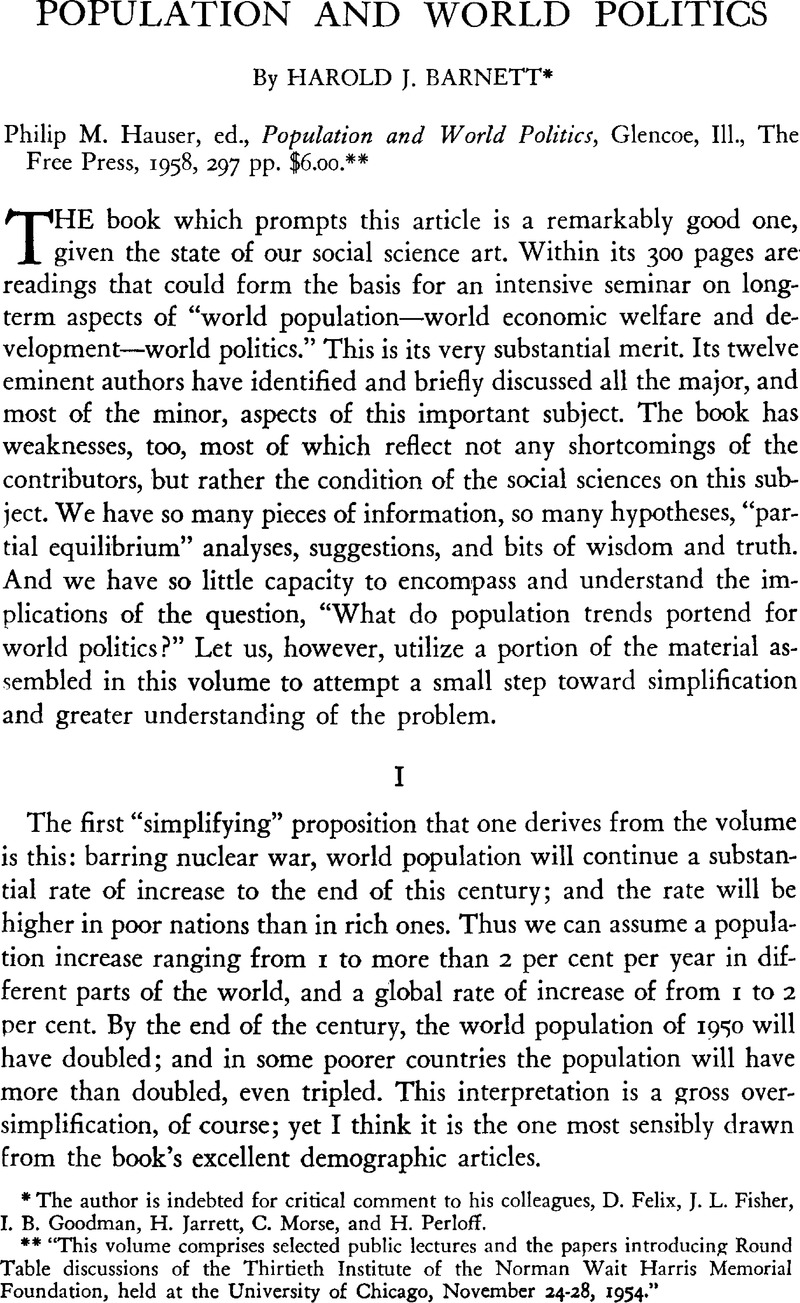No CrossRef data available.
Article contents
Population and World Politics
Review products
Published online by Cambridge University Press: 18 July 2011
Abstract

- Type
- Review Articles
- Information
- Copyright
- Copyright © Trustees of Princeton University 1960
References
** “This volume comprises selected public lectures and the papers introducing Round Table discussions of the Thirtieth Institute of the Norman Wait Harris Memorial Foundation, held at the University of Chicago, November 24–28, 1954.”
1 The question can also be concluded to be a key one on premises other than the ones I have used—e.g., purely on grounds of economic welfare. The best full-length treatment of this matter—an outstanding one indeed—is Coale, A. J. and Hoover, E. M., Population Growth and Economic Development in Low-Income Countries, Princeton, N.J., 1958.Google Scholar I use some of the Coale-Hoover data below. An excellent article-length treatment is Mehta's, F. A. “Economic Implications of Demographic Growth in India,” Economia lnternazionale, November 1955.Google Scholar
2 We know this, but, except in occasional advanced courses, we rarely teach it. If we ignore change in technology, then we can say all kinds of interesting things. For example, the first partial derivative of output with respect to each factor is declining, and the second is negative—this (loosely stated) is the law of diminishing marginal returns to each factor. And then if we adopt the notion of constant returns to scale (if all factors increase by 50 per cent, output will increase by 50 per cent), our interesting results increase. We can now show that the classical economists were indeed right. Since land is fixed by definition, marginal returns from mere additional doses of labor and capital decrease—a nice dilemma for India, Indonesia, China, or indeed any country.
3 The brevity of the argument in this and the two preceding paragraphs could lead to the inference that there is little or no value in public welfare services. This is not intended. The intent, rather, is to differentiate these allocations for urban “consumer capital” from investment that directly, immediately, and substantially improves labor productivity. The latter investment immediately provides higher levels of output and rate of output growth, and eventually provides much higher levels of consumer income and welfare.


